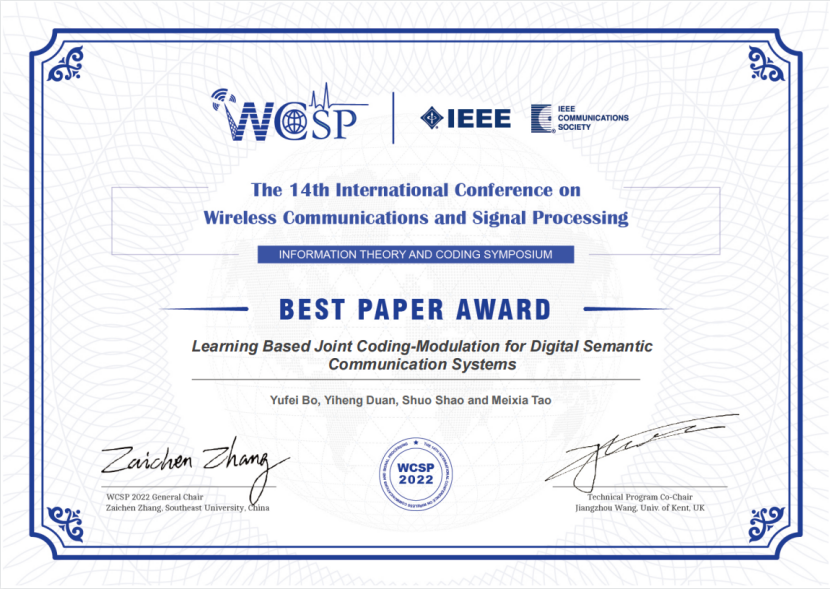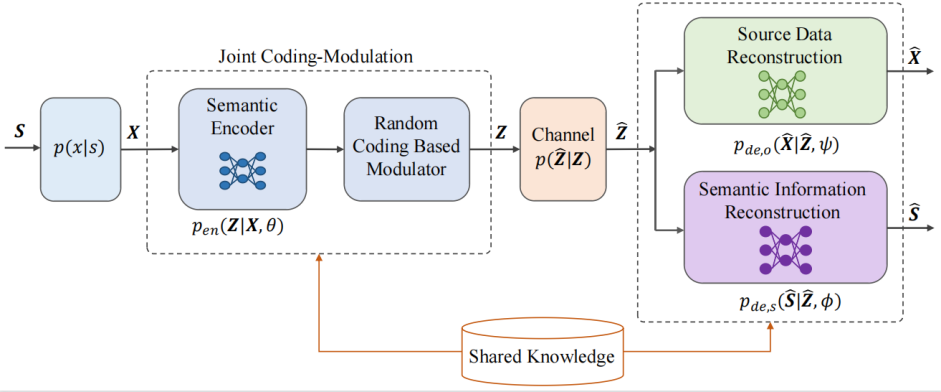- Home
- About Us
- Students
- Academics
-
Faculty
- Electrical Engineering
- Automation
- Computer Science & Engineering
- Electronic Engineering
- Instrument Science and Engineering
- Micro-Nano Electronics
- School of Software
- Academy of Information Technology and Electrical Engineering
- School of Cyber Security
- Electrical and Electronic Experimental Teaching Center
- Center for Advanced Electronic Materials and Devices
- Cooperative Medianet Innovation Center
- Alumni
-
Positions
-
Forum
News
- · Bin Dai's Team Unveils the Assembly Mechanism of β-Lactoglobulin Fibrils, Providing New Insights for the Development of Functional Nanomaterials
- · Mingyi Chen’s research group has made important progress in the field of analog-to-digital converter chips for brain-computer interface
- · Progress in the Development of Semiconductor Nanomaterials to Activate Pyroptosis for Cancer Therapy
- · Jiamiao Yang’s team achieved the high precision optoelectronic reservoir computing based on complex-value encoding
- · Significant Advancements in Resonator-Enhanced Quantum Sensing Achieved by Zenguihua's Team at the School of Sensing Science and Engineering
Professor Meixia Tao's Research Team Won the WCSP 2022 Best Paper Award
The 14th International Conference on Wireless Communication and Signal Processing (WCSP 2022) has been successfully held online from Nov. 1st to Nov. 3rd. One of the best paper award winner is the paper “Learning Based Joint Coding-Modulation for Digital Semantic Communication Systems”. It is jointly supervised by two professors from Shanghai Jiao Tong University, namely Distinguished Professor Meixia Tao from the Institute of Wireless Communication Technologies (IWCT) and Associate Professor Shuo Shao from the School of Cyber Science and Engineering. The authors of the paper are: Yufei Bo (PhD student), Yiheng Duan (graduate student), Shuo Shao (Associate Professor), Meixia Tao (Distinguished Professor).
The 14th International Conference on Wireless Communications and Signal Processing (WCSP 2022) is one of the most important international conferences held in China in the field of communication and signal processing, and a premier forum to present new advances and research results in theoretical, experimental, and applied Wireless Communications and Signal Processing.

Figure: Best Paper Award Certificate.

From left to right: Yufei Bo, Yiheng Duan, Shuo shao, Meixia Tao
Background and motivation
As a new communication paradigm beyond Shannon, semantic communication is one of the most cutting-edge areas in the current research of 6G communications. By extracting and transmitting the semantic information which can best support the tasks at the receiver end, semantic communications can effectively improve the efficiency and reduce the bandwidth demand in the communication. It has great application potential in intelligent communication scenarios such as smart transportation, human-computer interaction, metaverse, etc. However, most of the now existing semantic communication systems adopt the framework of end-to-end learning whose channel input are analog modulated symbols. This framework does not match with the existing digital communication system based on discrete constellations, and puts obstacles for the wide deployment of semantic communications.

Figure: Joint coding-modulation system model.
Methodology and Contributions
Combining machine learning with information theory, this paper proposes a joint coding-modulation scheme based on neural networks to achieve efficient and reliable semantic transmission under BPSK modulation. The system model is shown in the figure above, where the neural network at the transmitter end is used to learn the transfer probability from the source to the constellation points. Based on the learned transfer probability, the BPSK modulation symbols are generated at random. Through joint training, the receiver recovers both the semantic information and the source data. In neural network training, during backpropagation, the transfer probability of the constellation points is optimized, which solves the non-differentiablity problem caused by the mapping of floating-point numbers to discrete constellation points in digital modulation. Experimental results show that the proposed scheme can learn the modulation strategy that can match with the channel state. The proposed scheme performs better than existing digital semantic communication schemes, and is robust against the change of the channel state.
-
Students
-
Faculty/Staff
-
Alumni
-
Vistors
-
Quick Links
